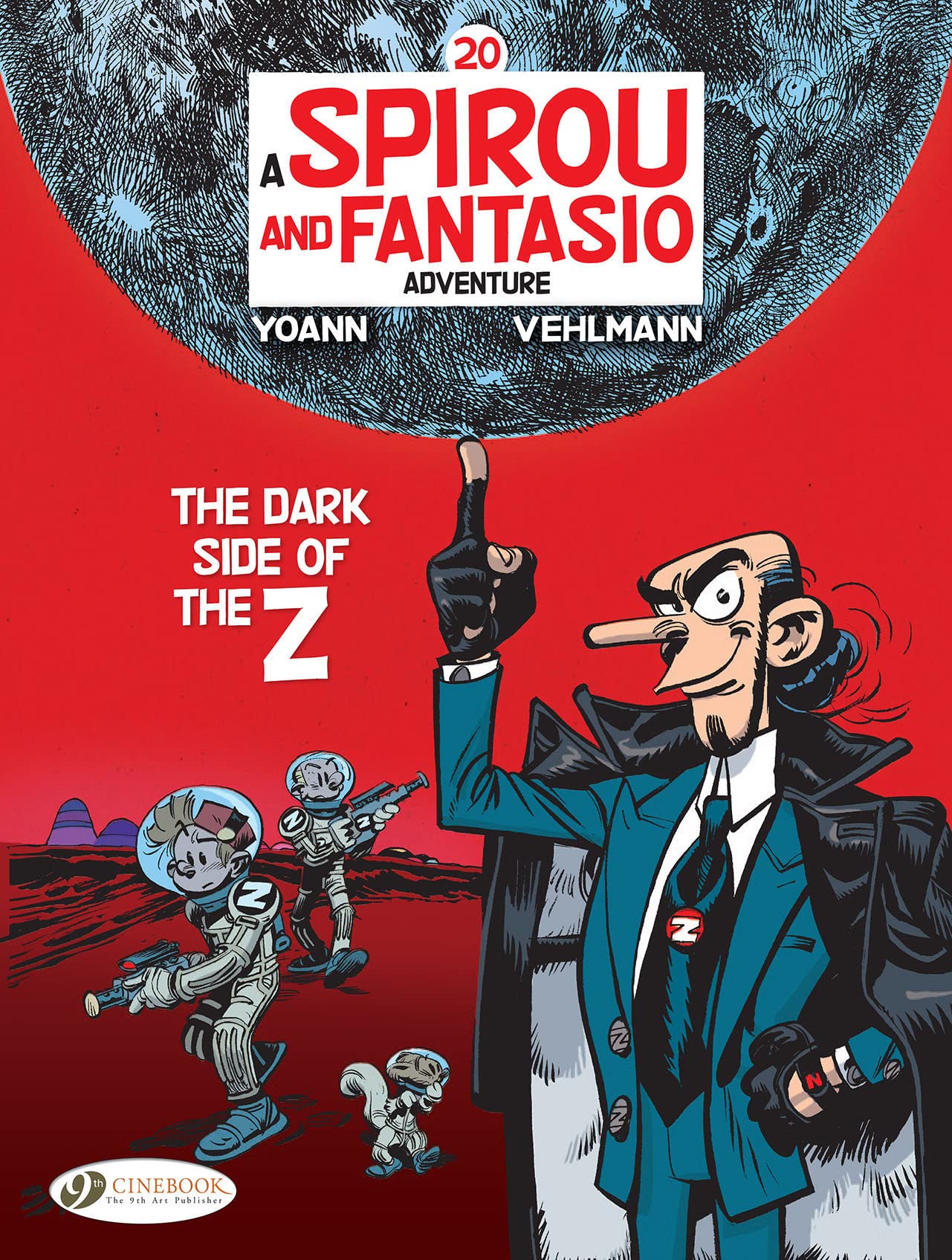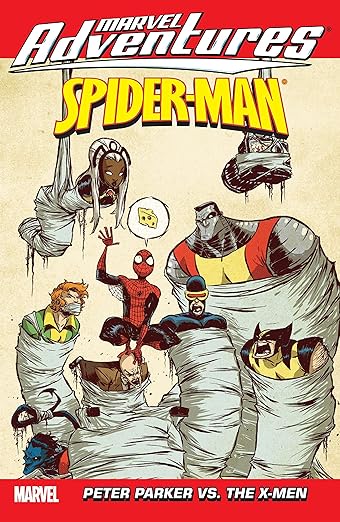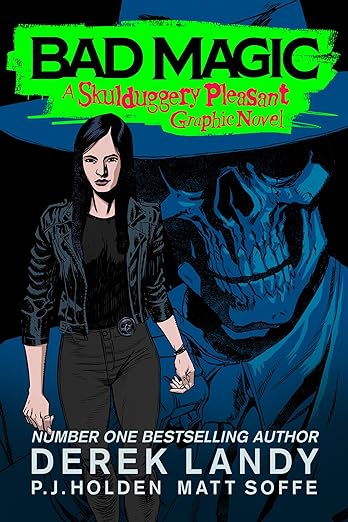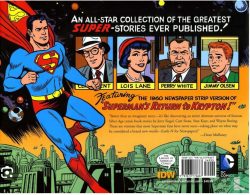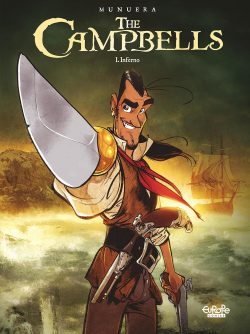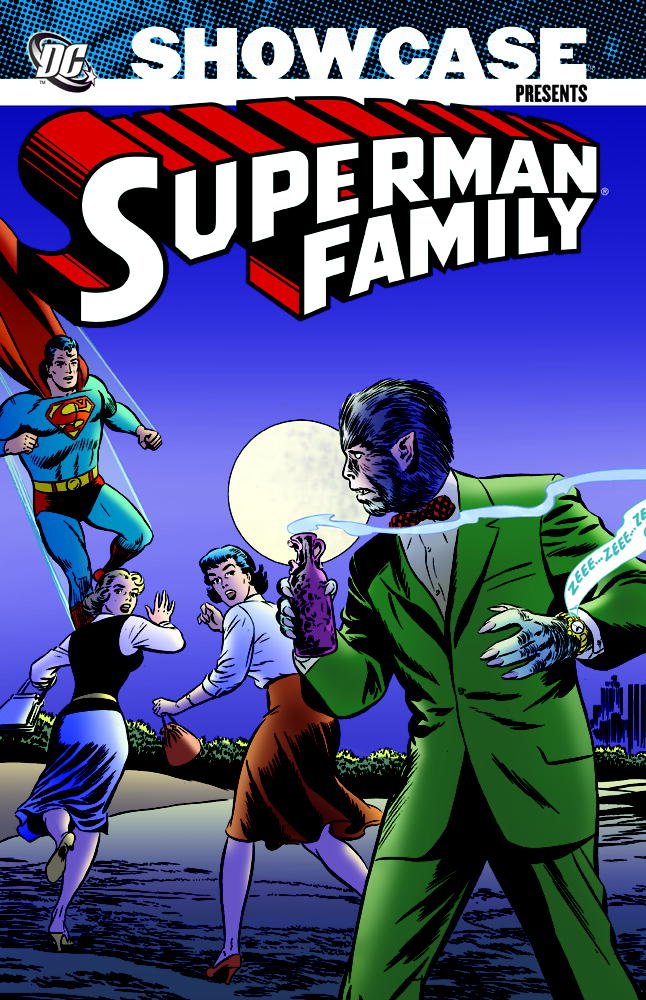
By Otto Binder, Robert Bernstein, Jerry Siegel, Alvin Schwartz, Bill Finger, Curt Swan, Kurt Schaffenberger, Wayne Boring, Dick Sprang, Al Plastino, Stan Kaye, Ray Burnley, John Forte, George Klein, John Giunta & various (DC Comics)
ISBN: 978-1-84576-812-6 (TPB)
When the groundbreaking Man of Steel debuted in Action Comics #1 (June 1938) he was instantly the centre of attention, but even then the need for a solid supporting cast was apparent and wisely tailored for. Glamorous daredevil girl reporter Lois Lane premiered beside Clark Kent and was a constant companion and foil from the outset.
Although unnamed, a plucky red-headed, be-freckled kid started working for Clark and Lois from Action Comics #6 (November 1938) onwards. His name was used in Superman #13 (November-December 1941), having already been revealed as Jimmy Olsen due to being a major player on The Adventures of Superman radio show from its debut (April 15th 1940).
As somebody the same age as the target audience for the hero to explain stuff to (all for the listeners’ benefit), he was the closest thing to a sidekick the Action Ace ever needed…
When the similarly titled television show launched in the autumn of 1952 – preceded a year earlier by landmark B-movie Superman and the Mole Men – it was another immediate sensation and National Periodicals began cautiously and judiciously expanding their revitalised franchise with new characters and titles.
During the 1950s/early 1960s, being different in America was a Very Bad Thing. Conformity was sacrosanct, even in comicbooks, and everybody and everything was meant to keep to its assigned and intended role: for the Superman family and cast, that meant a highly strictured code of conduct and parameters. Daily Planet Editor Perry White was a stern, shouty elder statesman with a heart of gold, Cub Reporter Jimmy was a brave and impulsive, unseasoned fool – with a heart of gold – with Lois brash, nosy, impetuous and unscrupulous in her obsession to marry Superman although she too was – deep down – another possessor of an Auric aorta. Moreover, although Clark was a Man in a Man’s World, his hidden alter ego meant that he must never act like one…
Yet somehow even with these mandates in place the talented writers and artists assigned to produce their wholesomely uncanny exploits managed to craft tales both beguiling and breathtakingly memorable – and usually as funny as they were exciting.
First to fill a solo title were the gloriously charming, light-hearted escapades of that rash, capable but callow photographer and “cub reporter”. Superman’s Pal Jimmy Olsen #1 launched in 1954 with a September-October cover date, the first spin-off star of the Caped Kryptonian’s rapidly expanding multi-media entourage.
As the decade progressed the oh-so-cautious Editors tentatively extended the franchise in 1957 just as the Silver Age of Comics was getting underway, and it seemed that there might be a fresh and sustainable appetite for costumed heroes and their unique brand of spectacular shenanigans. Try-out title Showcase, which had already launched The Flash (#4) and Challengers of the Unknown (#6), followed up with a brace of issues entitled Superman’s Girl Friend Lois Lane in #9 and 10, before swiftly awarding the “plucky news-hen” a series of her own; in actuality her second, since for a brief while in the mid-1940s she had held a regular solo-spot in Superman.
At this time Superman’s Girlfriend, Lois Lane was one of precious few titles with a female lead and – in the context of today – one that gives many 21st century fans a few uncontrollable qualms of conscience. Within the confines of her series the valiant and capable working woman careered crazily from man-hungry, unscrupulous schemer through ditzy simpleton to indomitable and brilliant hero – often all in the same issue – as the exigencies of entertaining children under the strictures of the Comics Code all too often played up the period’s astonishingly misogynistic attitudes.
The comic was clearly intended to appeal to the family demographic that made I Love Lucy a national phenomenon and Doris Day a ditzy latter day saint, so many stories were played for laughs in that same patriarchal, parochial manner; a “gosh, aren’t women funny?” tone that appals me today – but not as much as the fact that I still love them to bits.
It helps that they’re mostly illustrated by the wonderfully whimsical Kurt Schaffenberger.
Jimmy fared little better: a bright, brave but naive kid making his own way in the world, he was often butt of cruel jokes and impossible circumstances; undervalued and humiliatingly tasked in a variety of slapstick adventures and strange transformations.
This third cunningly conjoined chronologically complete compendium collects the affable, all-ages tales from Superman’s Pal Jimmy Olsen #35-44, March 1959-April 1960 and Superman’s Girlfriend, Lois Lane #8-16, April 1959-April 1960. It commences with the Man of Steel’s Go-To Guy in three tales drawn by the wonderful Curt Swan.
Probably fuelled by television (syndicated reruns kept the Superman family at the forefront of childish viewing habits) Jimmy’s comic was highly popular for over two decades, blending action, adventure, wacky comedy, fantasy and science fiction in the gently addictive, self-deprecating manner scripter Otto Binder had perfected in the 1940s and early 1950s at Fawcett Comics on the magnificent original Captain Marvel (you can call him Shazam!).
As the feature progressed, one of the most popular plot-themes (and most fondly remembered and referenced today by most Baby-Boomer fans) was the unlucky lad’s appalling talent for being warped, mutated and physically manipulated by fate, aliens and even his friends…
Superman’s Pal Jimmy Olsen #35 (March 1959) opened with ‘The Menace of Superman’s Fan Mail!’, by Binder & Swan, inked by Stan Kaye. Here, the cub reporter undertakes to answer the mountain of missives for the Man of Steel: inadvertently supplying a crook with an almost foolproof method of murdering the Metropolis Marvel.
The remaining tales are inked by Ray Burnley, beginning with a rather disingenuous yarn seeing the kid repeatedly causing trouble by wearing a futuristic suit of mechanised super-armour which only made him look like ‘The Robot Jimmy Olsen!’, whilst in ‘Superman’s Enemy!’ the devoted dope overnight turns into a despicable, hero-hating wretch. However, as a veritable plague of altered behaviour afflicts Clark Kent’s friends, the Action Ace soon discerns an underlying pattern…
Superman’s Girlfriend, Lois Lane #8 (April 1959) opened with Alvin Schwartz & Kurt Schaffenberger’s ‘The Superwoman of Metropolis’, heavy-handedly turning the tables on our heroine when she develops incredible abilities and took on a costumed identity, and was instantly plagued by a suspicious Clark determined to expose her secret.
‘The Ugly Superman!’ dealt with a costumed wrestler who fell for Lois, giving the Caped Kryptonian another chance for some pretty unpleasant Super-teasing. It was written by Robert Bernstein, who unlike me can use the tenor of the times as his excuse, and pleasingly ameliorated by Schaffenberger delivering another hilarious dose of OTT comedic drama illustration. Following is a far less disturbing fantasy romp: ‘Queen for a Day!’ (Bernstein, Wayne Boring & Stan Kaye) found Lois and Clark shipwrecked on an island of Amazons with the plucky lady mistaken for their long-prophesied royal saviour…
Jimmy Olsen #36 began with Binder, Swan & Burnley’s ‘Super-Senor’s Pal!’, with the boy South of the Border in the banana republic of Peccador helping a local rebel fight the dictators by masquerading as a Latino Man of Steel. Kaye inked the momentous debut of ‘Lois Lane’s Sister!’, introducing perky “air-hostess” Lucy as romantic foil and occasionally attainable inamorata for the kid, in a smart, funny tale of hapless puppy love. With Burnley inks the final tale details the cub reporter’s accidental time-trip to Krypton and ‘How Jimmy Olsen First met Superman!’
Although we all think of Siegel & Shuster’s iconic creation as the epitome of comicbook creation, the truth is that very soon after his launch Superman became a multimedia star and far more people have seen or heard the Man of Steel than have ever read him – and yes, that does include the globally syndicated newspaper strip which ran from 1939 to 1966. By the time his 20th anniversary rolled around he had been a regular on radio, starred in a series of astounding animated cartoons and two movies, and just ended his first smash live-action television serial. In his future were many more, a stage musical, a stellar movie career and almost seamless succession of TV cartoons beginning with The New Adventures of Superman in 1966 and continuing ever since. Even Krypto got in on the small-screen act…
Thus it’s no wonder tales from this Silver Age period should be draped in gaudily wholesome trappings of Tinseltown – even more so than most of celebrity-obsessed America. It didn’t hurt that editor Whitney Ellsworth was a part-time screenwriter, script editor and producer as well as National/DC’s Hollywood point man.
The Man of Tomorrow’s TV presence influenced much of Lois Lane #9: a celebrity-soaked issue scripted by Bernstein which began with artists Dick Sprang & John Forte detailing how performer Pat Boone (who just-coincidentally had his own licensed DC comic at that time) almost exposed Earth’s greatest secret in ‘Superman’s Mystery Song!’
The Silver Screen connection continued in the Schaffenberger-limned ‘The Most Hated Girl in Metropolis’, wherein Lois is framed for exposing that self-same super-secret as a ruse to get her to Hollywood for her own unsuspected This is Your Life special. That issue ended with a welcome return to fantasy/comedy as Schaffenberger introduces a lost valley of leftover dinosaurs and puny caveman Blog – ‘Lois Lane’s Stone-Age Suitor’…
In JO #37 Bill Finger, Swan & John Forte reveal the incredible truth about multi-powered Mysterio in the case of ‘Superman’s Super-Rival’, whilst Binder, Swan & Kaye expose the difficulties of frivolous Lucy Lane having ‘The Jimmy Olsen Signal Watch!’: a timepiece that kept the boy on a constant electronic leash…
This issue closes with a cunning caper wherein resident crackpot genius Professor Phineas Potter concocts a serum enabling Jimmy to reprise his many malleable antics and tangled troublemaking as ‘The Elastic Lad of Metropolis!’ (Binder, Swan & George Klein) – and almost exposing Superman’s secret identity into the bargain.
Records from the period are sadly incomplete but Bernstein probably wrote each tale in Lois Lane #10, beginning with Schaffenberger-limned classic ‘The Cry-Baby of Metropolis’, as Lois – terrified of losing her looks – exposes herself to a youth ray and temporarily turns into a baby, much to the amusement of Superman and arch-rival Lana Lang…
Schaffenberger also illustrated ‘Lois Lane’s Romeo!’ with the constantly spurned reporter finally giving up on her extraterrestrial beau. Typically, she’s then romanced by a slick, romantic European who’s was also a conniving, crooked conman. She rebounds in top crime-busting form for ‘Lois Lane’s Super-Seance!’ (Boring & Kaye): apparently endowed with psychic sight, but actually pulling the wool over the eyes of superstitious crooks.
Superman’s Pal Jimmy Olsen #38 also tapped TV connection as the lad becomes ‘The MC of the Midnight Scare Theatre!’ (Bernstein, Swan & Forte): uncovering an incredible mystery after his hoary, hokey stage act apparently scares four viewers to death…
Although by the same creators, the broad humour of ‘Jimmy Olsen’s Wedding! to Lucy has a far less ingenious explanation, but at least ‘Olsen’s Super-Supper!’ (Bernstein, Swan & John Giunta) wraps up on a high as the impecunious kid enters an eating contest and allows shady operators to try an experimental appetite-increasing ray on him. Of course, the mad scientists have an ulterior, criminal motive…
A plane crash and head wound transform Lois into a fur-bikinied wild woman in #11 of her own magazine, but – even after being rescued by Superman – ‘The Leopard Girl of the Jungle!’ (Finger & Schaffenberger) has one last task to valiantly undertake. Anonymously authored ‘The Tricks of Lois Lane!’ finds the restored reporter up to her old tricks to expose Clark as Superman, whilst ‘Lois Lane’s Super-Perfume!’ (Bernstein) seems able to turn any man into a love-slave – until the Man of Steel exposes criminal scammers behind it…
Binder, Swan & Forte crafted all of Jimmy Olsen #39, beginning with the lad stuck on another world and quickly seen as ‘The Super-Lad of Space!’, after which, back in Metropolis, his ill-considered antics lose and win and lose him again a fortune in ‘The Million Dollar Mistakes!’ Lastly, ‘Jimmy Olsen’s Super-Signals!’ see him misplace his Superman-summoning watch and forced to spectacularly improvise every time he gets into trouble…
Bernstein wrote LL #12, beginning with two Schaffenberger specials: ‘The Mermaid of Metropolis’ in which an accident dooms Lois to life underwater beside Sea King Aquaman, until Superman cures her piscoid condition, whilst in ‘The Girl Atlas!’ Lana sneakily turns herself into a super-powerhouse to corral the Man of Steel and learns what sneaky means when Lois strikes back…
Al Plastino rendered ‘Lois Lane Loves Clark Kent!’, as the reporter, believing she has incontrovertible proof of Superman’s secret, starts a campaign to entrap her unknowing colleague in wedlock…
Swan & Forte illustrated all of JO #40, beginning with Binder’s ‘The Invisible Life of Jimmy Olsen’ as our hapless chum is enmired in all manner of mischief after a gift from his best pal unexpectedly leaves him unseen but not trouble-free. ‘Jimmy Olsen, Supergirl’s Pal!’ sees the reporter temporarily struck blind, just as a crook with a grudge tries to kill him. With Superman out of touch, the Caped Kryptonian’s secret weapon Supergirl (at this time a newly-arrived, hidden trainee no one except cousin Kal-El and Krypto know of) rushes to the rescue, only to have the feisty lad disbelieve and dispute her very existence.
Bernstein then exposes ‘Jimmy Olsen, Juvenile Delinquent!’ as he goes undercover to break up a street gang and discovers Perry White’s own son is a member…
Bernstein & Schaffenberger led in Lois’ 13th issue, hilariously ‘Introducing… Lois Lane’s Parents!’ Superman had offered her a lift home to the farm of Sam and Ella Lane for a family reunion, but thanks to a concatenation of circumstances, local gossip and super-politeness, the Man of Steel quickly finds himself peer-pressure-press-ganged into a wedding.
Fair Warning: this contains Lois’ first nude scene as a proud father gets out baby albums…
From the same creative team – and in a brilliant pastiche of My Fair Lady – ‘Alias Lois Lane!’ see the indomitable inquirer undercover as sketchy floozie Sadie Blodgett in a plan to snap candid shots of a movie star. It all goes south when “Sadie” is “hired” by crooks to impersonate Superman’s girlfriend in an assassination plot bound to fail!
Next, Finger, Boring & Kaye disclose ‘The Shocking Secret of Lois Lane!’ following a tragically implausible incident forcing the journalist to cover her disfigured head in a lead-lined steel box. Thankfully, the Action Ace is around to deduce what’s really going on…
Superman’s Pal Jimmy Olsen #41 opened with Bernstein, Swan & Forte’s ‘The Human Octopus!’, highlighting the lad’s negligent idiocy as he impetuously eats alien fruit and grows six more arms. However, the true effect of the space spud is far more devious…
Binder & Kaye joined Swan for ‘The Robot Reporter!’, with Jimmy using an automaton provided by Superman to do his job as he recuperates from a damaged ankle. Nonetheless, he manages to get into trouble from the comfort of his apartment. Thanks to stupid showing off, he’s then mistaken for a master fencer and catapulted into a Ruritanian adventure as ‘Jimmy Olsen, the Boy Swordsman!’ (Binder, Swan & Forte).
Binder & Schaffenberger opened LL #14 with ‘Three Nights in the Fortress of Solitude!’ as conniving journalist has contrived to isolate herself with Superman long enough to prove how much he needs a woman in his life, only to suffer one disaster after another…
Bernstein scripted ‘Lois Lane’s Soldier Sweetheart!’, revealing her warm and generous side as she helps a lonely GI attain his greatest desire. Jerry Siegel then returned to the character he created (and based on his own wife!) using still-secret Supergirl to catastrophically play cupid in ‘Lois Lane’s Secret Romance!’
Jimmy Olsen #42 started with uncredited story ‘The Big Superman Movie!’ (art by Swan & Forte), wherein the star-struck kid consults on a major motion picture. He would far rather have played himself, much to Lucy’s amusement, but ultimately the sharp apprentice journalist has the last word – and laugh. Bernstein was back for ‘Perry White, Cub Reporter!’ which has Editor and junior trading places, with power only apparently going straight to Olsen’s head, after which ‘Jimmy the Genie!’ sees something similar occur when boy reporter and magical sprite exchange roles in a clever thriller illustrated by Swan & Giunta.
Superman’s Girlfriend, Lois Lane #15 featured a landmark mystery in ‘The Super-Family of Steel!’ (Binder & Schaffenberger) which seemingly sees Lois attain her every dream. She and her Kryptonian Crimebuster first become ‘Super-Husband and Wife’, with ‘The Bride Gets Super-Powers’ as a consequence. They even have a brace of super-kids before the astounding ‘Secret of the Super-Family’ is revealed…
In Superman’s Pal #43 TV show 77 Sunset Strip got a name-check as ‘Jimmy Olsen’s Four Fads!’ (Swan & Kaye) finds the kid attempting to create a teen trend to impress Lucy, whilst as ‘Phantom Fingers Olsen!’ (Boring & Kaye) he infiltrates a gang of murderous thieves, before being adopted by ‘Jimmy Olsen’s Private Monster!’ (Siegel, Swan & Forte). After causing no end of embarrassment in Metropolis, the bizarre beast takes Jim to his home dimension where even greater shocks await…
The book’s final Superman’s Girlfriend, Lois Lane is #16 (April 1960) opening with ‘Lois Lane’s Signal-Watch’ with Schaffenberger art on (possibly) a Siegel script. Here the Man of Steel learns to regret ever giving a woman who clearly has no idea what “emergency” means a device to summon him at any moment of day or night…
That slice of scurrilous 1950s propaganda is inexplicably balanced by a brilliant murder thriller displaying all Lois’ resilience and fortitude as she infiltrates and solves (Bernstein’s) ‘The Mystery of Skull Island’, before Siegel authors another cruel dark tragedy wherein Superman tries to cure Lois’ nosy impulses – by tricking his own girlfriend into believing she has a death stare in ‘The Kryptonite Girl!’ Of course, as all couples know, such power develops naturally not long after the honeymoon…
I love these stories, but sometime words just fail me.
Superman’s Pal Jimmy Olsen #44 completes this third monochrome monolith, starting with Halloween-styled tale ‘The Wolf-Man of Metropolis!’ (Binder, Swan & Kaye) by blending horror, mystery and heart-warming charm in a mini-classic which sees the boy cursed to hairy moon madness. Desperate for surcease his only hope is a willing maiden to cure him with a kiss. That’s followed by Siegel, Swan & Forte’s ‘Jimmy’s Leprechaun Pal!’, a magical imp who made life hell for the cub until human ingenuity outwitted magical pranksterism, after which Bernstein, Swan & Kaye crafted possibly the strangest and most disturbing yarn in this compilation as the boy went undercover as a sexy showgirl to get close to gangster Big Monte in ‘Miss Jimmy Olsen!’
As well as containing some of the most delightful episodes of the pre angst-drenched, cosmically catastrophic DC, these fun, thrilling, deeply peculiar and yes, often potentially offensive stories also perfectly capture the changing tone and tastes which reshaped comics from the safe 1950s to the seditious, rebellious 1970s, all the while keeping to the prime directive of the industry – “keep them entertained and keep them wanting more”.
Despite my good-natured cavils from my high horse here in the 21st century (or “the End of Days” as they’re more commonly known), I think these stories have a huge amount to offer funnybook fun-seekers. I strongly urge you to check them out.
© 1959, 1960, 2009 DC Comics. All Rights Reserved.





